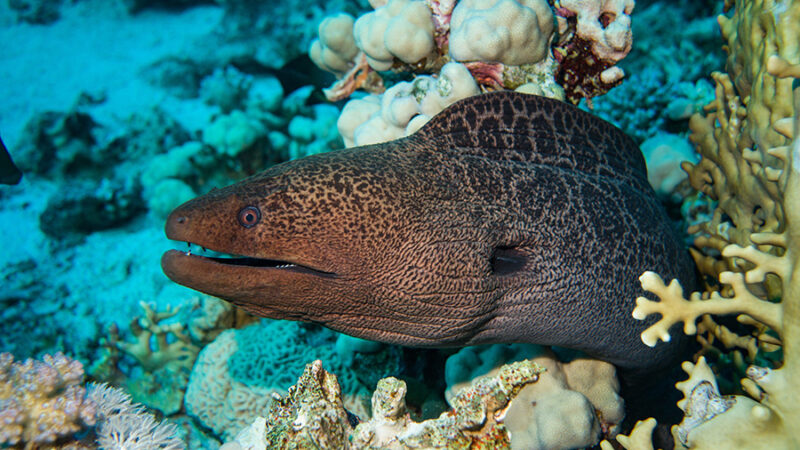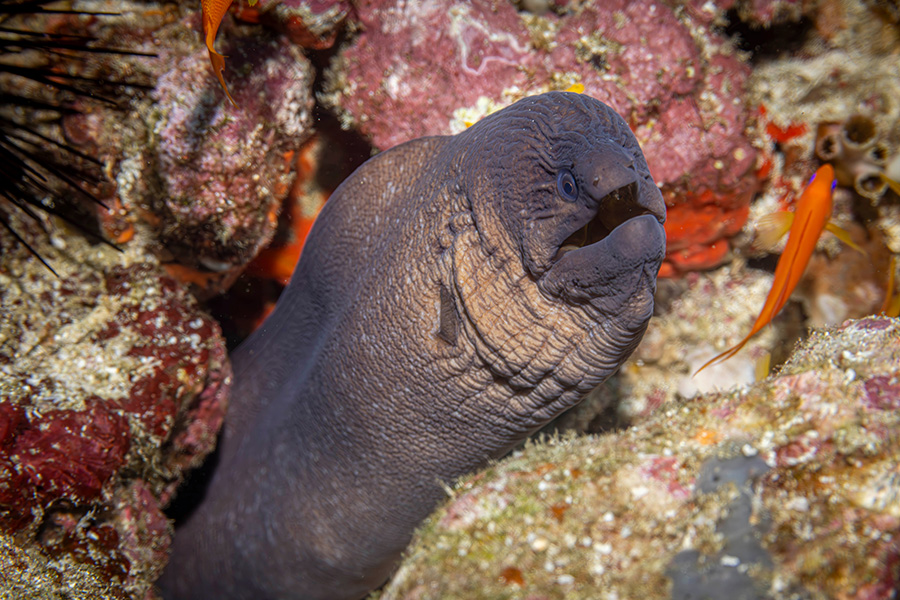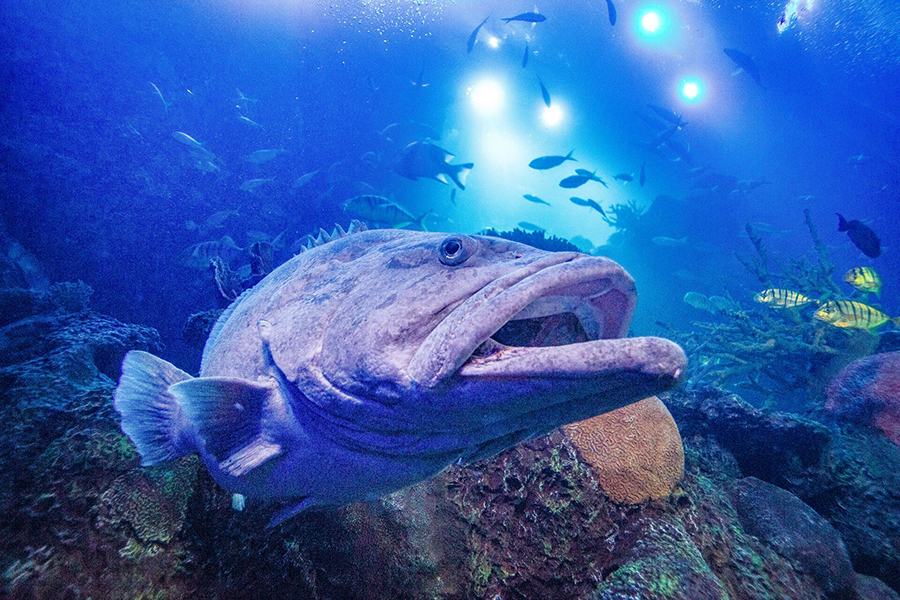Giant Moray Eel

- Common Name: Giant Moray Eel
- Scientific Name: Gymnothorax javanicus
- Diet: Fish and crustaceans
- Range: Indo-Pacific waters
- Size: 8 to 10 feet and 50 to 70 pounds
- Lifespan: 10 to 30 years
IUCN Red List Status: Least Concern
Least Concern
Overview
The giant moray eel is one of the largest and most recognizable eel species in the world. Known for its impressive size, powerful jaws, and striking appearance, this eel plays a vital role in reef ecosystems as both predator and partner in cooperative hunting. Despite its fearsome look, it is a fascinating and ecologically important marine creature.
Geographical Distribution and Habitat
Giant moray eels are widely distributed throughout the Indo-Pacific region, including the Red Sea, East Africa, and Micronesia. In Australia, they are commonly found along the northern coasts, thriving in warm tropical waters.
Their preferred habitats include coral reefs, rocky crevices, underwater caves, and ledges, where they can hide during the day and emerge at night to hunt. These eels are typically solitary and territorial, often occupying the same hiding spot for extended periods.

Diet
Giant moray eels are carnivorous ambush predators, primarily feeding on reef fish and occasionally crustaceans such as crabs and shrimp. Notably, they have been identified as natural predators of invasive lionfish, helping to control populations of this harmful species in some reef environments. Their hunting strategy relies on stealth and sudden bursts of speed, using their strong jaws and sharp teeth to capture prey.
Fun Facts
- Giant moray eels are complementary hunters with groupers. These eels will scare prey out of the reefs for the grouper to hunt, while the groupers will scare prey down into the reefs for the eels to hunt.
- Like other species of moray eel, giant morays have a second set of jaws called pharyngeal jaws, which help them pull prey down their throat after the initial bite.
- These eels are mostly nocturnal, emerging from their dens at night to hunt, which helps them avoid daytime predators and human activity.
- Giant moray eels can grow up to over 10 feet in length, making them one of the largest eel species in the world.

